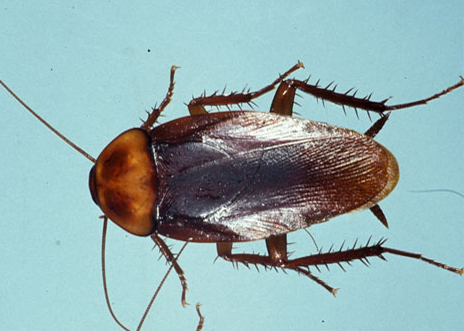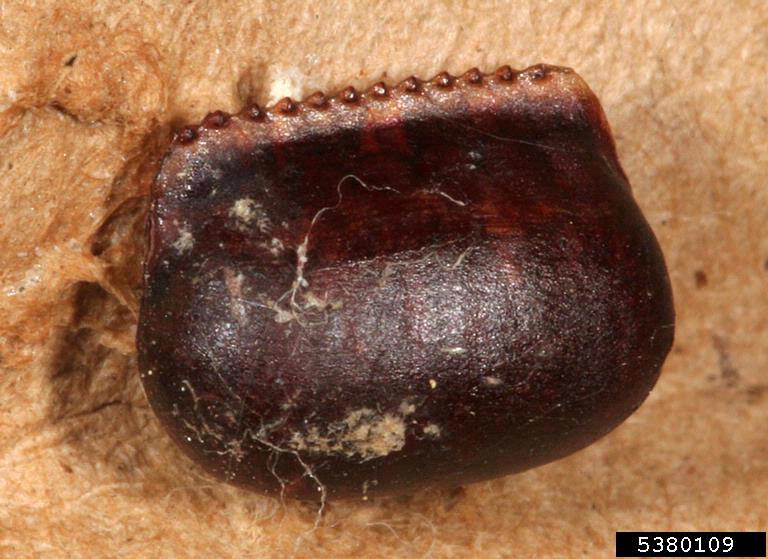American Cockroach
Periplaneta americana
Identification
- reddish brown with a lighter border around the head
- largest species commonly found in Utah; up to 2 inches long
- immatures: smaller than adults; coloration variable; no wings (see middle image)
Nesting Habits
- can live outdoors and indoors
- usually found in basements or on the first floor
- move indoors during hot weather and flooding
- found in warm, moist areas—under sinks, in bathtubs, in sewer drains and in furnace and boiler rooms
Diet
- eat almost anything but mostly decaying vegetation, insect remains and sweets
Significance
- may transmit disease pathogens
- cause allergic reactions, similar to asthma, in some people
- can be an asthma trigger
IPM Recommendations
- Continually monitor for roaches in pest vulnerable areas, especially kitchens, boiler rooms, custodial closets, etc. using sticky trap monitors.
- Educate occupants of building or room(s) of their role in eliminating roaches.
- Dispose of trash regularly to remove food/shelter sources.
- Store food in pest-proof containers.
- Repair any leaks or plumbing malfunctions because cockroaches are attracted to damp environments.
- Caulk, install weather stripping or replace door sweeps where cockroaches can potentially enter buildings.
- Use roach baits and/or boric acid dust.
- Vacuum (with ah HEPA filter) roaches and egg cases.




